Introduction
In this article, we’ll talk about nuclear localization signal and how nuclear localization helps in the nuclear transport. so, let’s started
What is the Nuclear Localization Signal (NLS)?
Nuclear localization signal exists in the proteins which are destined to be delivered inside the nucleus. This signal is kind of like a targeting sequence for any protein to be delivered to the nucleus.
Structural Features of NLS
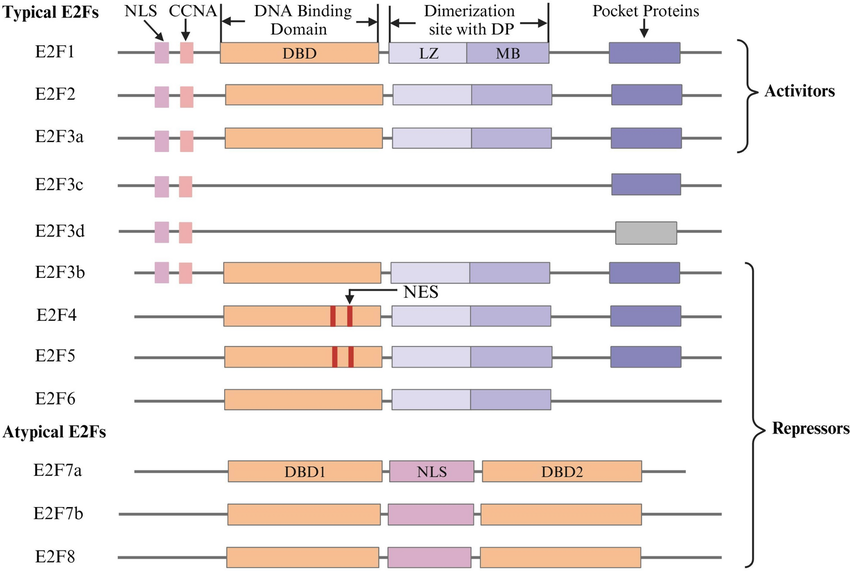
The (NLS) Nuclear Localization Signal sequence at a structural level has basic amino acids on both the sides flanked by a basic amino acid spacer which is roughly a 10 amino acid stretch long. These basic amino acids and the spacers are pretty typical.
Discovery of NLS
The first NLS which was discovered was large T antigen of the SV40 virus.
Experiment: Attaching NLS to GFP
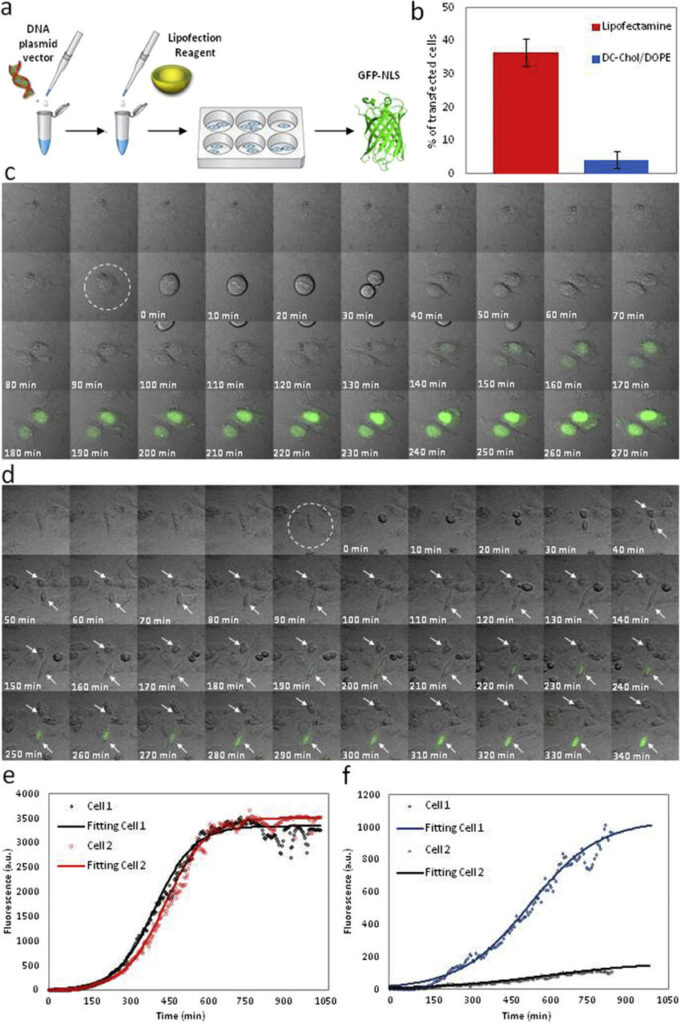
NLS sequence can be attached to any particular protein. In this case, we are going to attach NLS with GFP and GFP-containing plasmid would be expressed in the cell.
GFP and NLS in Action
If the NLS is there, it would take the GFP to the nucleus, right? Because it has the nuclear localization signal. Otherwise, it’s a cytosolic GFP, expected outside the nucleus. But once NLS is attached, GFP would be localized into the nucleus and fluorescence would come out from the nucleus.
How Does NLS Aid in Nuclear Transport?
This is one way to understand how the nuclear localization signal itself helps in the process of nuclear transport.
The Importance of NLS
Let’s try to understand why NLS is important. Imagine we are talking about a transcription factor. If NLS is removed, nuclear localization would not happen. In contrast, when NLS is attached to a cytoplasmic enzyme, it will eventually move to the nucleus.
NLS Dictates Protein Delivery
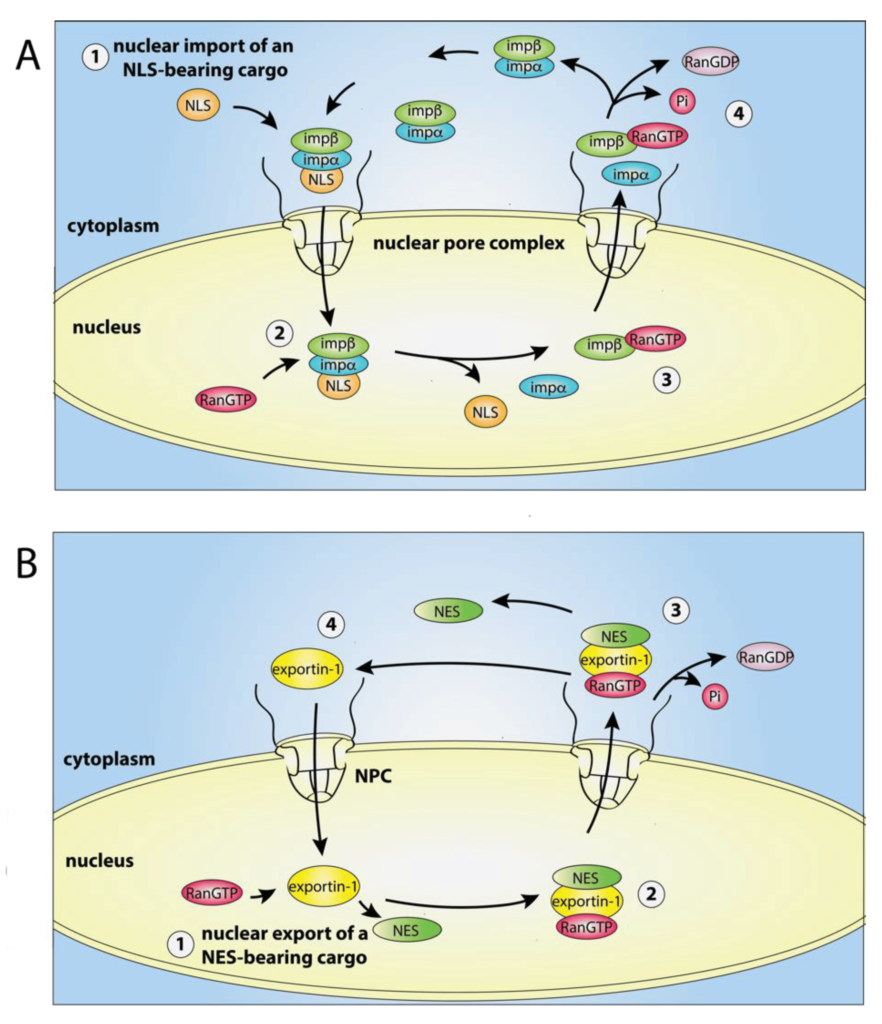
NLS dictates how and when a protein would be delivered to the nucleus. This protein might be a transcription factor which needs to perform a transcriptional role, so it has to get inside the nucleus. There could also be proteins that are part of the DNA damage repair machinery, which need access to the DNA in the nucleus.
Read also..
7 Food to increase testosterone hormone
Ventilation & Dead Spaces in Respiratory Tract
Proximal and Distal
Do all transcription factors have nuclear localization signals?
Yes, most transcription factors have nuclear localization signals (NLSs). These signals help transport transcription factors from the cytoplasm to the nucleus.
The Role of Importin in Nuclear Transport
The main player in recognizing NLS is the protein called importin. Importin imports the protein into the nucleus. It interacts with the nuclear pore complex, and through a conformational change, it allows the protein to enter.
Ran GTP in the Nucleus
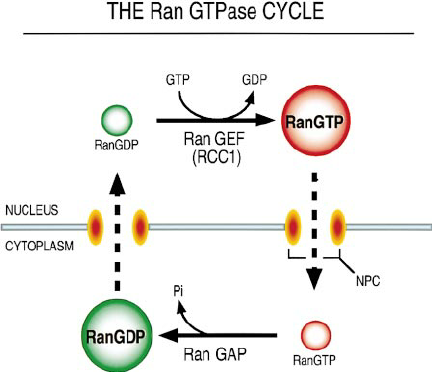
Once inside the nucleus, there is a particular GTPase protein known as Ran GTP. Ran GTP interacts with the protein-importin complex and frees up the protein from importin. Eventually, Ran GTP exports the importin out of the nucleus.
Mechanism of Protein Trapping in the Nucleus
Now, the protein is trapped inside the nucleus and is free to do its job. On the cytoplasmic side, GAP hydrolyzes GTP to produce GDP, and other proteins like NTF2 bring Ran GDP back into the nucleus.
Nuclear Import and Export
This is how the interaction between NLS and importin facilitates the import of proteins like enzymes or transcription factors that are destined for the nucleus. nuclear transport
What is the purpose of the NLS?
A Nuclear Localization Signal (NLS) is a short sequence of amino acids within a protein that acts as a “tag” to direct the protein into the nucleus of a cell, allowing it to pass through the nuclear pore complex and perform its function inside the nucleus; essentially, it serves as a signal for nuclear import.
The Significance of Nuclear Localization and Export
Nuclear localization signals, nuclear export, and import regulate how much time a transcription factor or repair protein stays inside the nucleus. If a particular factor stays for a long time in the nucleus, it might regulate transcription for a long time. If it’s exported out of the nucleus, the duration of transcription can be modulated.
A Specific Example: NF-AT Transcription Factor
Let’s take a specific example: NF-AT is a transcription factor that is hyperphosphorylated and stays in the cytoplasm. The enzyme calcineurin dephosphorylates this factor, exposing the nuclear localization signal marked in red.
How NF-AT Moves in and Out of the Nucleus
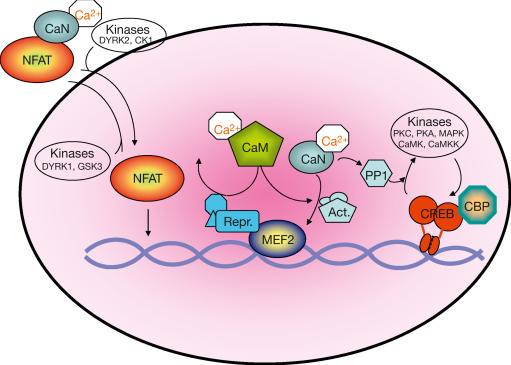
Once NF-AT is dephosphorylated, the NLS allows it to interact with importin and enter the nucleus. It’s freed up inside the nucleus and can perform its transcriptional role. When calcium levels are low, phosphorylation occurs again, exposing the nuclear export signal, sending NF-AT back to the cytoplasm.
Conclusion
This process of nuclear import and export, and the specific signals like NLS and NES, govern how transcription factors and other proteins are transported in and out of the nucleus, enabling regulation of critical cellular functions.
What is the best nuclear localization signal?
he “best” characterized nuclear localization signal (NLS) is considered to be the one found in the SV40 large T antigen, which is a monopartite NLS with the sequence “PKKKRRV”, meaning it consists of a cluster of positively charged amino acids (lysine and arginine).


